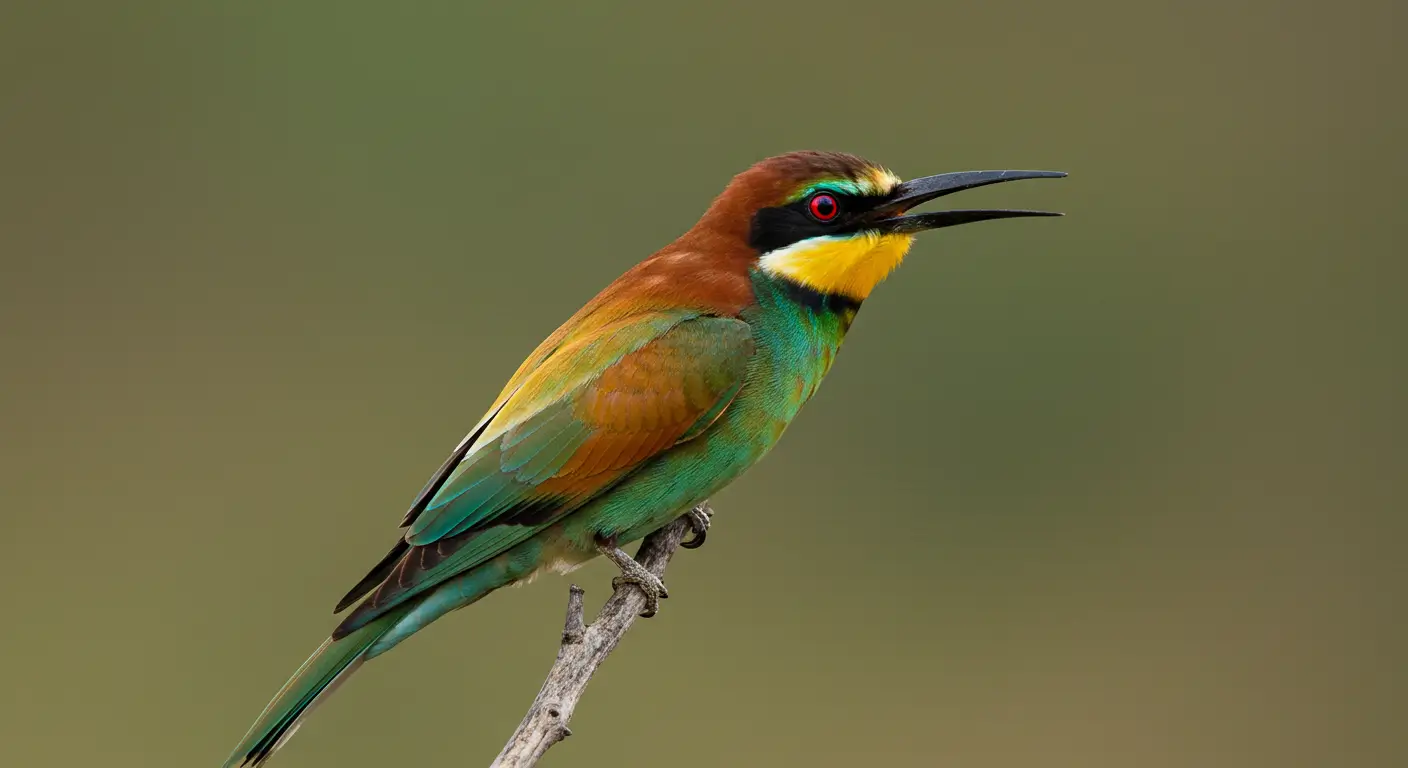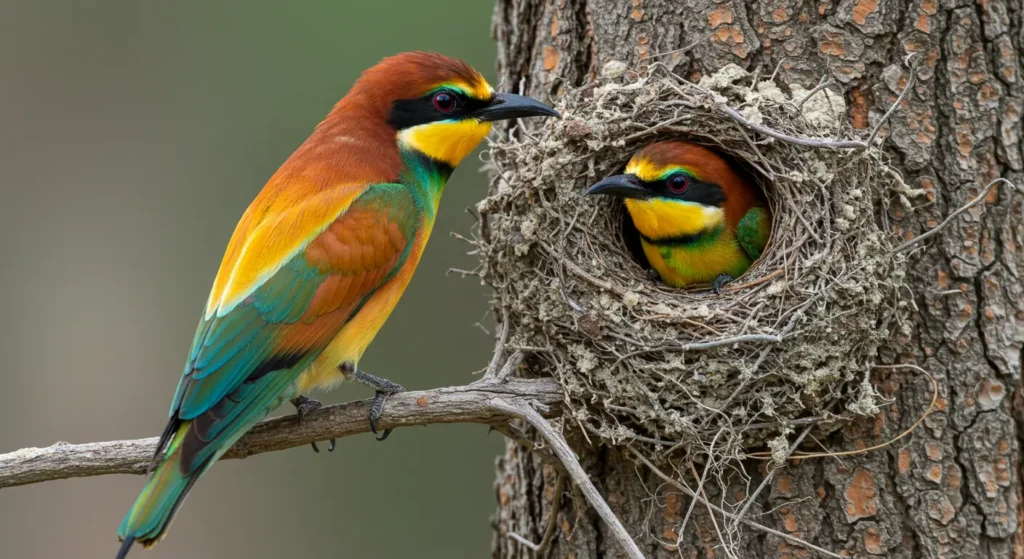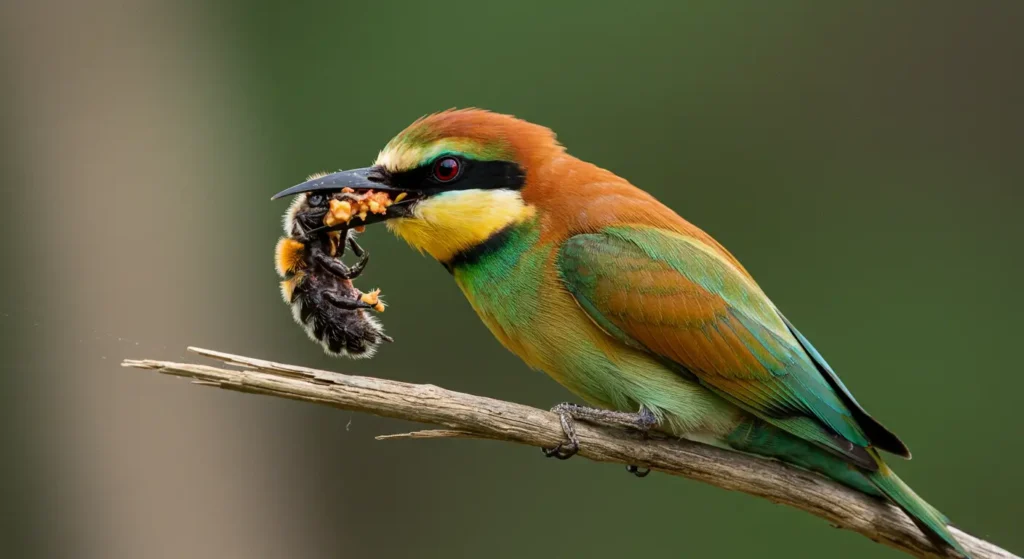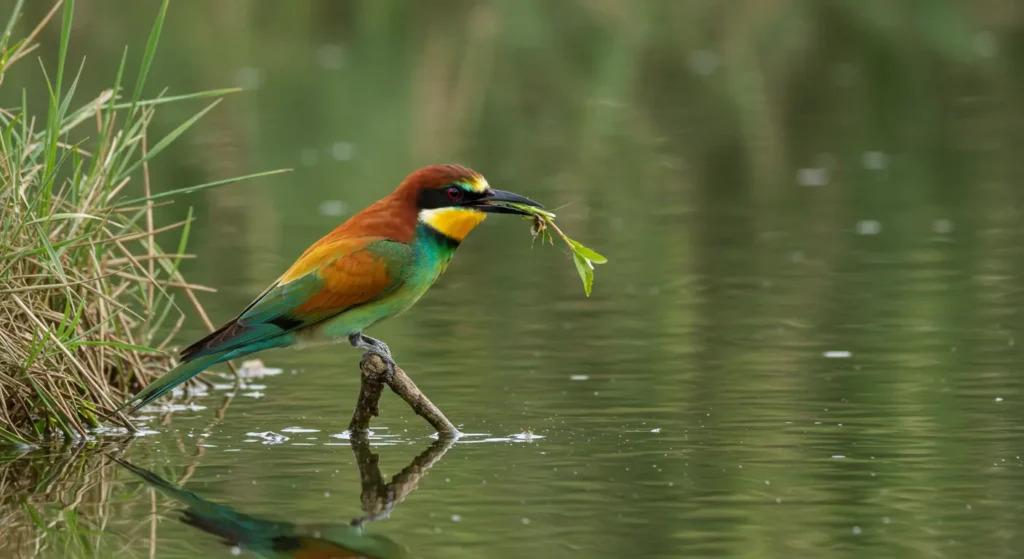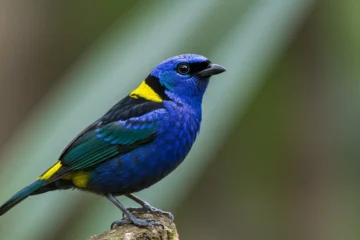The European Bee-Eater is a colorful bird native to parts of Europe, Africa, and western Asia. This bird mostly prefer to eat bees and wasps during its flight. It removes the stinger by hitting the insect against a hard surface before eating.
European Bee-Eaters live in colonies and often nest in sandy banks. They migrate seasonally and fly thousands of miles between continents. Sightings do happen rarely in North America and always excite birdwatchers.
Images of European Bee-Eater
General Characteristics of European Bee-Eater
Here are certain general characteristics of this bird which can catch the attention of public birdwatchers:
| General Characteristics | Features Specific to European Bee-Eater |
| Scientific Name | Merops apiaster |
| Size | About 11 inches long with a 19 inches wingspan |
| Colors | Bright mix of green, yellow, blue, and chestnut |
| Beak shape | Long, slightly curved, and perfect for catching flying insects |
| Diet | Mostly bees, wasps, and other flying insects |
| Hunting style | Catches insects mid-air in fast swoops |
| Habitat | Prefers open countryside, near rivers or sandbanks |
| Vocal sound | Soft and rolling “prreee” call while flying |
| Flight style | Fast and agile flyer with sharp wing beats |

Lifespan of European Bee-Eater
A European Bee-Eater usually lives around 5 to 6 years in the wild. It can live up to 10 years when kept in captivity with proper care. It is rarely kept in the U.S. due to legal and habitat limits.

Interesting Facts Related to European Bee-Eater
This bird possess some unique habits that are quite different from normal bird species. Here are some of those interesting facts that can be attributed to European Bee-Eater:
1. Eat Wasps Without Getting Stung
European Bee-Eaters eat bees and wasps but they don’t get stung. They smash the insect on a branch to remove the stinger and venom before eating. Their technique protects them from harm.
This process is instinctive, quick, and a practical survival strategy. They simply avoid the risk without requiring proper immunity.
2. Nest Underground Like Mammals
European Bee-Eaters dig tunnels unlike most birds. These burrows can be over 3 feet long. They nest deep inside sandy banks or cliffs. It protects eggs from predators and weather.
Their chicks grow in complete darkness at first. This nesting method is more like a fox than a bird.
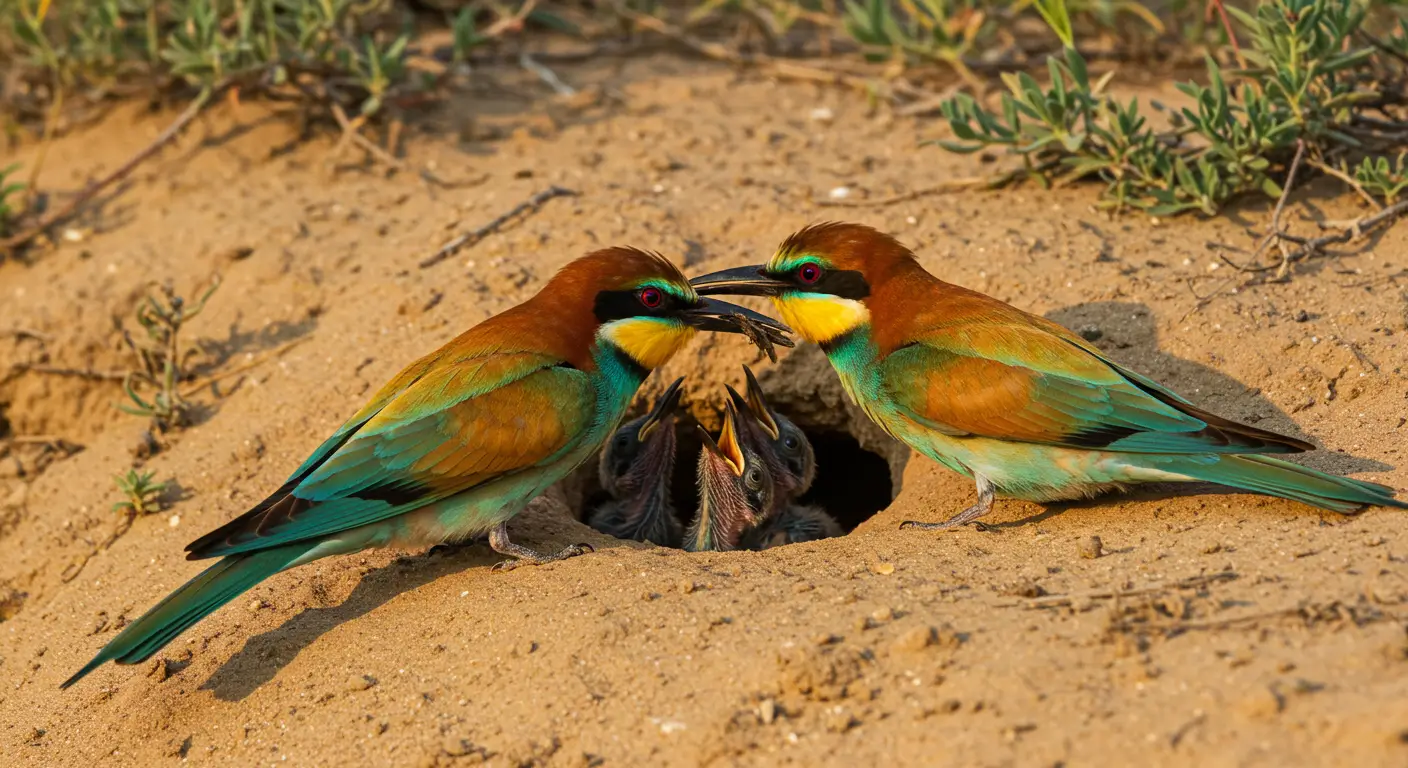
3. Live in Large and Noisy Colonies
These birds don’t like to nest alone. They live in colonies that can include dozens or even hundreds of pairs. Each bird digs its own burrow and it’s often close to others.
The result is a buzzing and social cliffside community. Their constant calls fill the air and indicate the presence of a living bird neighborhood.
4. Both Parents Share All Nesting Duties
Both mom and dad share jobs equally in European Bee-Eater families. They take turns incubating the eggs and feeding the chicks. This equal partnership is rare among birds.
The teamwork helps raise strong and healthy chicks. Young birds often get food every few minutes. This cooperative parenting style is very efficient.
5. Often Raise a Chick That Isn’t Theirs
A third adult helps a pair raise chicks. This bird is usually a grown child from the previous year. Scientists call this “cooperative breeding.” It helps young helpers learn parenting.
The extra adult feeds and protects the chicks. It boosts the survival rate of the whole brood.
6. Use Sunbathing to Stay Healthy
European Bee-Eaters spend time with wings spread wide in the sun. This behavior helps them control parasites. The sun’s heat may kill mites on their feathers.
It also helps keep feathers in good shape. Birds even combine sunbathing with dust bathing, since it’s their version of a hygiene routine.
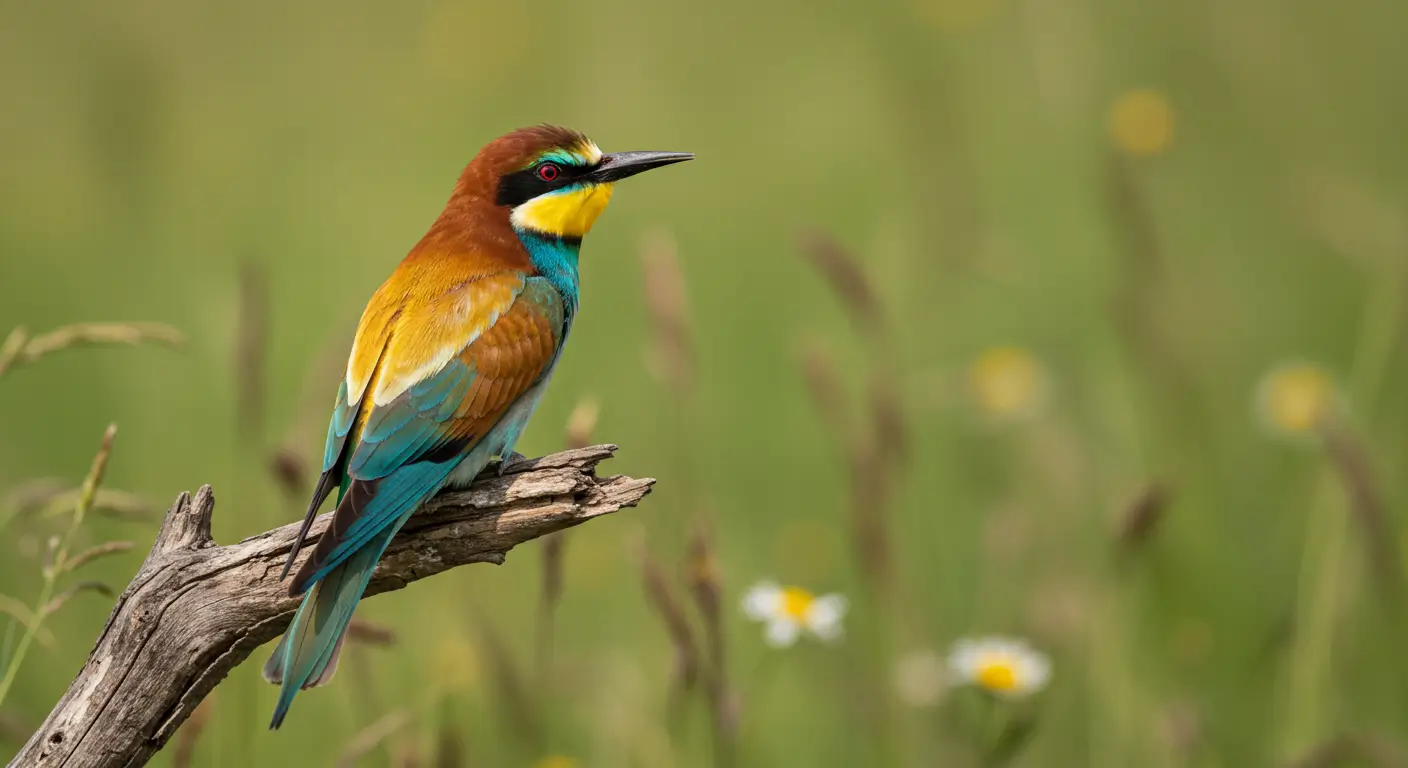
7. Feathers Flash Like a Tropical Bird
Their colors rival any parrot even though they live in Europe. Bright green, yellow, blue, and chestnut feathers make them stand out among other birds. Their colors shimmer in sunligh and they don’t need dense forests to shine.
Their appearance often surprises first-time watchers. It’s nature’s version of stained glass in motion.
8. Choose Food Based on Weather
European Bee-Eaters avoid hunting when skies are cloudy. Insects don’t fly much in bad weather, so bee-eaters rest too. They are sunshine-dependent feeders. Their daily routine changes with the climate.
This makes them very sensitive to shifts in weather. Even a single cloudy day reduces their food.
9. Catch Insects in Mid-Air
These birds don’t hunt on the ground. They snatch insects while flying and this phenomena is called “hawking.” Their speed and precision are impressive.
They can change direction quickly in pursuit. They catch bees, dragonflies, and butterflies during mid-flight. Their eyes can spot tiny prey from far away.
10. Migrate Across Three Continents
European Bee-Eaters migrate from Europe to Africa each year. Some fly over 3,700 miles one way. Their route crosses the Mediterranean and Sahara which is one of the longest bird migrations.
They return to Europe in spring to breed. Few birds make such long journeys every year.

11. Can Hover Like a Hummingbird
They can stop in the air for a moment despite their preference. They use this to line up with prey and it’s not common among medium-sized birds.
Their wings beat fast and hold them in place, which helps them make accurate catches. It’s a high-energy move they don’t overuse.
12. Eyes Are Naturally Protected from Bee Stings
European Bee-Eaters have narrow slits and thick skin around their eyes. This helps protect them from stings during feeding. They also close their eyes at the moment of attack.
This is a built-in safety measure. Evolution shaped these defenses perfectly for their diet. Their design suits their risky food choices.
13. Use Flight Displays to Attract Mates
Males perform courtship flights with twists and dives. They call loudly and flash their colors while some even offer food mid-air to females. These displays test both stamina and color quality.
Females choose the most agile and colorful males. It’s both a show and a test of fitness.

14. Avoid Forests and Prefer Open Land
European Bee-Eaters need open fields with nearby cliffs or banks. They avoid dense forests and their hunting style needs wide space. You’ll see them in grasslands, farmland, or near rivers.
Their habitat choice supports easy flight and good views. Urban sprawl threatens these key environments.
15. Influence Local Insect Populations
They can reduce local bee and wasp numbers in places where colonies nest. They do affect the balance of population without destroying the delicate natural balance.
This sometimes worries beekeepers but studies show they usually eat non-honeybees. Their role in the ecosystem is complex and still under study.
Sightseeings of European Bee-Eater
These birds are not very commonly spotted at all the places where bird species are abundant. Here are some places where these birds can be seen:
| Location | States in Which it is Located |
| Gambell, St. Lawrence Island | Alaska |
| Barrow | Alaska |
| High Island, Galveston County | Texas |
| Key West | Florida |
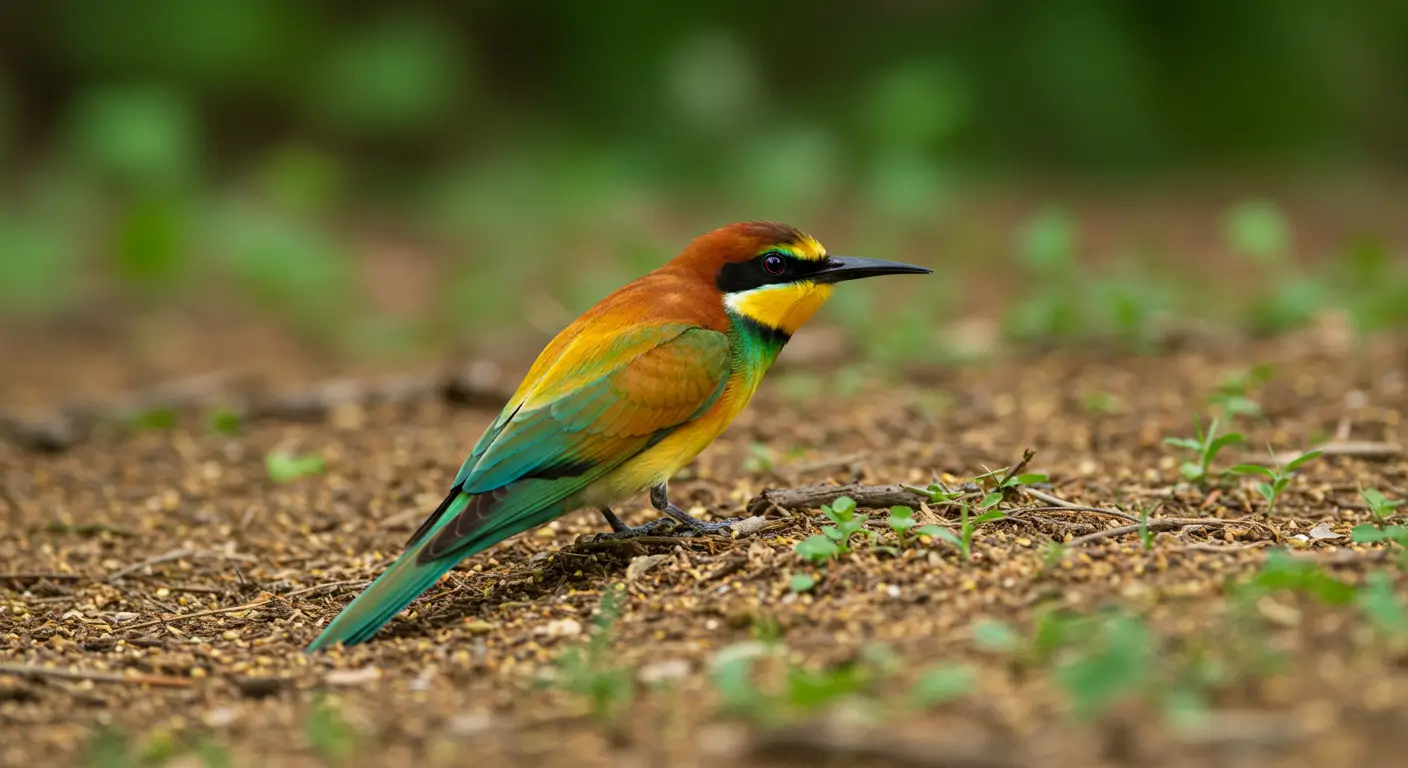
Key Photography Tips of European Bee-Eater
Below are some good tips to get good clicks of this rarely sighted bird in the USA:
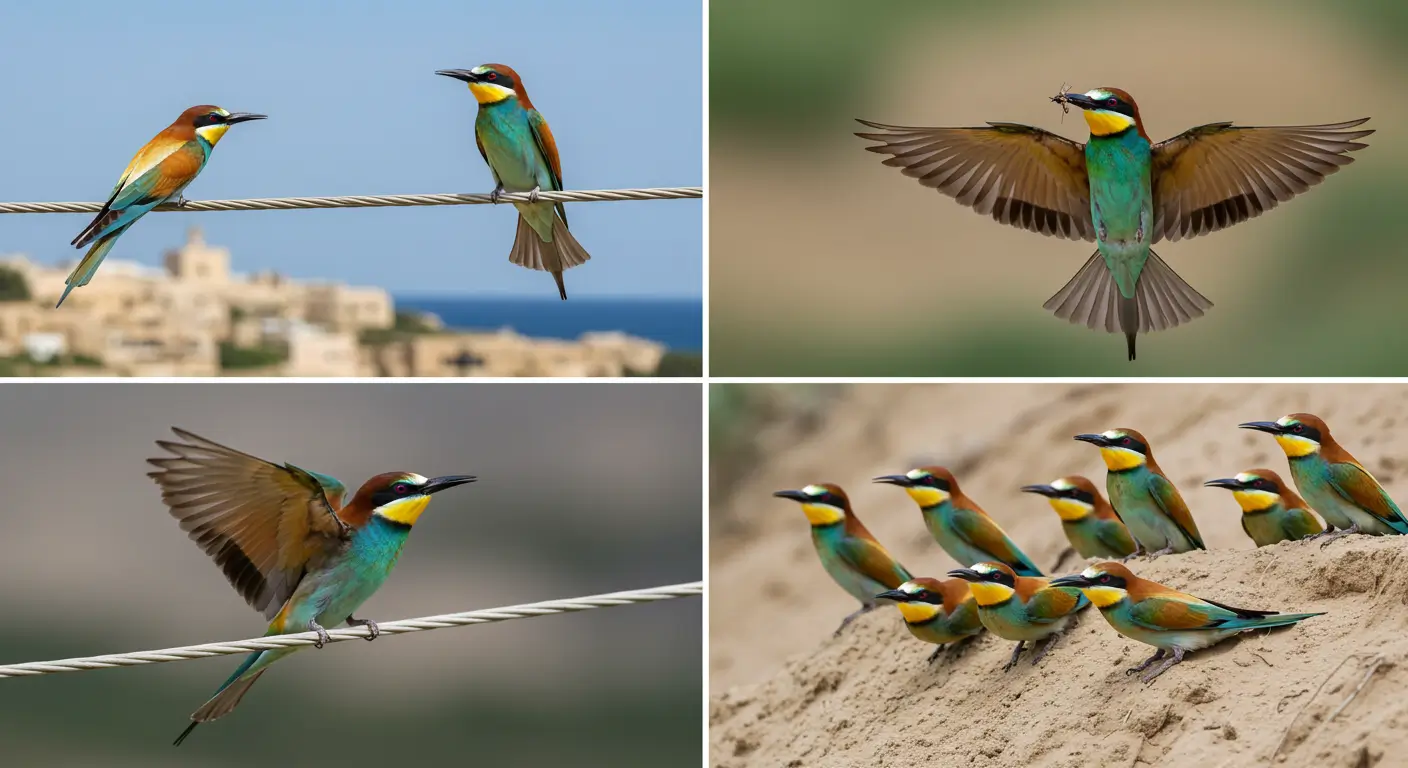
-
Use a long lens to capture close shots without disturbing the bird during its short migration stop in southern states.
-
Shoot early in the morning when the light is soft and the bird is actively hunting insects.
-
Focus on attractive backgrounds like blue skies or green fields to expose the bird’s colors.
-
Set your shutter speed high (1/2000s or more) to freeze their fast flight while catching bees mid-air.
This bird hold a very different overall nature when compared to other birds of the same category. This bird doesn’t prefer fruits but rather eat insects which is a quite different preference in terms of diet. The incredible ability of this bird to cover large distances during migration and their parenting skills are quite appreciable.
FAQs
1. Can I see a European Bee-Eater in the USA?
No, European Bee-Eaters are not native to the USA. They are found in Europe, parts of Asia, and Africa.
2. Why is it called a “Bee-Eater”?
It eats bees, wasps, and other flying insects. Before eating, it rubs the stinger off.
3. What makes the European Bee-Eater special?
Its bright rainbow colors, long pointed beak, and its skill in catching insects mid-air make it unique.

